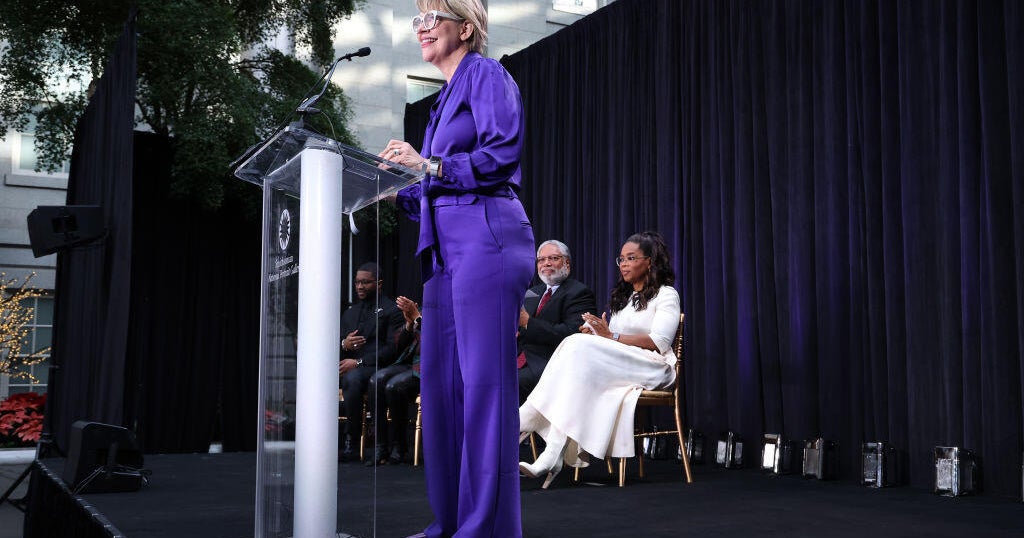In a significant move, President Trump has dismissed the Director of the Smithsonian Institution’s National Portrait Gallery, Kim Sajet, citing her strong support for Diversity, Equity, and Inclusion (DEI) principles as a reason for her removal. Announced via Trump’s Truth Social platform, the decision marks his continued efforts to reshape federal cultural institutions, which he perceives as being influenced by partisan politics. Sajet, who has held the position since 2013, was previously appointed by former President Barack Obama and has faced ongoing criticism from Trump regarding DEI policies.
| Article Subheadings |
|---|
| 1) Background of Kim Sajet and her tenure |
| 2) Trump’s criticism of cultural institutions |
| 3) The implications of Sajet’s removal |
| 4) Previous actions by Trump against federal art leadership |
| 5) Future prospects for the Smithsonian Institution |
Background of Kim Sajet and her tenure
Director Kim Sajet was appointed to lead the National Portrait Gallery in 2013 amidst a wave of institutional changes under the Obama administration. With a background in cultural management, she previously served as the president of the Historical Society of Pennsylvania. Born in the Netherlands and raised in Australia, Sajet emerged as a notable figure in the American art scene, advocating for greater inclusivity within the institutions she led. Her tenure at the National Portrait Gallery has been marked by significant exhibitions and initiatives aimed at increasing public engagement with the arts, particularly around themes intersecting with cultural equity. However, her strong advocacy for DEI initiatives has become a focal point of contention in the current political landscape.
Trump’s criticism of cultural institutions
Since taking office, President Trump has made it clear that he views various federal cultural institutions—including the Smithsonian networks—as bastions of leftist ideologies. His concerns center around what he perceives as “divisive, race-centered ideology” being propagated through various programs and exhibitions. In March, he signed an executive order aimed at curbing federal funding for initiatives that promote DEI, which he argues tarnishes the mission of cultural institutions to reflect a unified American identity. Trump’s administration has framed these policies as an essential step in reestablishing American values across the cultural spectrum.
The implications of Sajet’s removal
Sajet’s dismissal has broader implications for the National Portrait Gallery and the Smithsonian Institution at large. Critics argue that her ousting represents a substantial risk to the artistic integrity and mission of the institutions under the Smithsonian umbrella. Without strong advocates for DEI, experts fear that cultural narratives may skew towards a singular perspective, ultimately alienating large segments of the population from their national heritage. The move could also set a precedent for future leadership appointments, where loyalty to the current political ethos takes precedence over experience and the commitment to artistic independence.
Previous actions by Trump against federal art leadership
The change in leadership at the National Portrait Gallery is not an isolated incident but part of a larger trend initiated by Trump against positions in federal cultural leadership roles. Earlier this year, he also replaced leadership at the Kennedy Center for Performing Arts, dismissing the chairman and president and repositioning the board with individuals who align with his political views. These actions collectively signal a shift towards a more politically aligned inferiority in the arts and culture sector, raising concerns about the long-term impacts on national and cultural narratives.
Future prospects for the Smithsonian Institution
Looking ahead, the Smithsonian Institution could face considerable shifts in its operations and direction regarding its roles in education and public service. With newly appointed leadership who may align more closely with Trump’s ideologies, critics warn that this can result in limiting the diversity of exhibitions and educational materials. The long-term vision for the Smithsonian remains uncertain, as it continues to navigate the complexities of fulfilling its mission amidst political pressures. Stakeholders advocate for ensuring that various voices and narratives are included in the national discourse that institutions like the Smithsonian are designed to represent.
| No. | Key Points |
|---|---|
| 1 | Trump has ousted Kim Sajet, the Director of the National Portrait Gallery, due to her support for DEI. |
| 2 | Sajet served in the role since 2013 and was previously appointed by Barack Obama. |
| 3 | Trump has signed an executive order targeting funding for programs he views as ideologically divisive. |
| 4 | The dismissal reflects Trump’s broader campaign against perceived left-leaning ideologies in cultural institutions. |
| 5 | Future directions for the Smithsonian could limit diversity in narratives presented within its exhibitions. |
Summary
The removal of Kim Sajet from the National Portrait Gallery highlights the ongoing cultural and political tensions surrounding federal institutions in the United States. As Trump reshapes the leadership landscape, concerns mount regarding the potential erosion of diversity and inclusivity within these critical cultural sites. The implications of such changes could reverberate through the art community and beyond, as the broader American narrative is increasingly influenced by the current political climate. Stakeholders continue to advocate for a balanced approach that respects the diverse fabric of the nation.
Frequently Asked Questions
Question: Why was Kim Sajet removed from her position?
Sajet was dismissed due to her alleged support for DEI initiatives, which President Trump has criticized as partisan and inappropriate for her leadership role.
Question: What are DEI initiatives?
DEI initiatives stand for Diversity, Equity, and Inclusion, aimed at fostering representation and equity within institutions and workplaces.
Question: What impacts could Trump’s actions have on cultural institutions?
Trump’s actions may lead to a shift towards less diversity in cultural narratives, affecting the storytelling and representation present within institutions like the Smithsonian.


